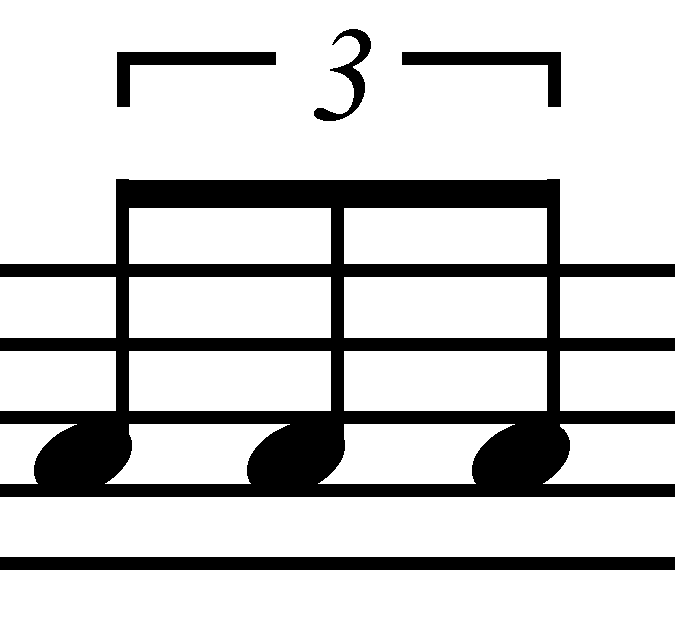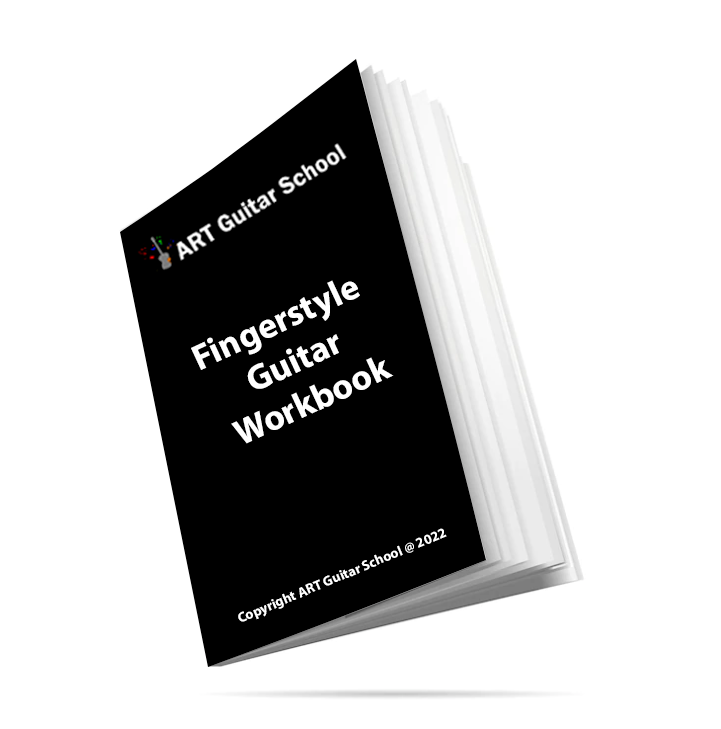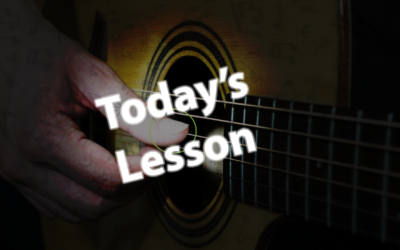One of the most common questions in regards to rhythm is how to play a triplet picking pattern. In order to do so you must first understand how a triplet works.
A triplet is split evenly into three parts within a quarter note. It’s like squeezing 3 eighth notes into one beat however, the duration of each is now slightly shorter due to the limited amount of time to fit each note within that beat.
Rhythm #1
Here is a quarter note pattern to start with. Pluck each note as one beat.
We added a half note at the end to fulfill the measure.

Rhythm #2
Now let’s try an eighth note pattern. Pluck two notes for each beat. They must fit evenly within the quarter note on the down and up beats.

Rhythm #3
Finally, this is the triplet pattern. I would recommend started by plucking only the first string with this rhythm. Count the rhythm as “one and ah, two and ah”.

Here is a video on popular finger picking patterns to start with:
If you were having trouble making the trip it’s even within the beat try using a metronome set a quarter notes 40 BPM and practice playing three notes within each beat.
FOLLOW US ON
Get our FREE Fingerstyle Workbook!
RELATED BLOG POSTS
Guitar Legato Exercises
Legato is a technique that allows you to play smooth and connected lines on the guitar, creating a flowing and expressive sound. By mastering different legato exercises, you can improve your finger dexterity, enhance your phrasing, and develop your ability to play fast and fluid lines.
To start practicing legato on the guitar, begin by learning the basic hammer-ons and pull-offs technique. Use your fretting hand to play notes by hammering on the string with your finger or pulling off the string with your finger. Practice playing these techniques slowly and evenly, focusing on clean and clear articulation.
Next, work on developing your legato technique by incorporating hammer-ons, pull-offs, and slides into scales, licks, and solos. Experiment with different finger combinations and patterns to create smooth and connected lines. Practice playing legato exercises with a metronome to improve your sense of timing and control.
You can also practice legato exercises by incorporating legato into your existing playing style. Try adding legato to scales, arpeggios, and chord progressions to enhance your phrasing and create dynamic and expressive melodies.
By incorporating legato exercises into your daily practice routine, you can improve your finger dexterity, enhance your phrasing, and become a more fluid and expressive player.
Guitar Tapping Techniques
Tapping is a flashy and expressive technique that allows you to play fast and intricate passages on the guitar. By mastering different tapping techniques, you can create unique sounds, expand your melodic possibilities, and develop your own distinctive playing style.
To start practicing tapping on the guitar, begin by learning the basic two-handed tapping technique. Place your picking hand on the neck of the guitar and use your fretting hand to tap the strings, creating a quick and percussive sound. Practice tapping on different strings and frets to develop finger coordination and accuracy.
Next, experiment with different tapping patterns and sequences to create melodic lines and solos. Try tapping arpeggios, scales, and chord shapes to explore the full range of possibilities that tapping has to offer. Experiment with different finger combinations and rhythms to create unique and dynamic sounds.
You can also practice tapping exercises by incorporating tapping into your existing playing style. Try adding taps to scales, licks, and solos to enhance your phrasing and create new textures and effects.
By incorporating tapping techniques into your daily practice routine, you can expand your melodic possibilities, develop your finger coordination and accuracy, and become a more creative and expressive player.
Guitar Bending Exercises
Bending strings is a fundamental technique for guitar players, allowing you to add emotion, expression, and character to your playing. By practicing bending exercises regularly, you can develop your ear for pitch, improve your finger strength and control, and enhance your overall technical proficiency on the instrument.
To start practicing bending on the guitar, begin by learning the basic half-step and whole-step bends. Place your fretting hand on the neck of the guitar and use your fingers to push the string upward, bending the pitch of the note. Practice bending slowly and evenly, focusing on hitting the target pitch accurately.
Next, work on developing your bending technique by incorporating bends into scales, licks, and solos. Experiment with different bending styles, such as pre-bends, release bends, and bend-and-hold techniques, to create a wide range of expressive effects.
You can also practice bending exercises by playing long, sustained bends or quick, staccato bends, focusing on control and accuracy. Use a tuner to check your pitch accuracy and adjust your technique as needed.
By incorporating bending exercises into your daily practice routine, you can improve your ear for pitch, enhance your expressive playing, and become a more dynamic and versatile player.




0 Comments